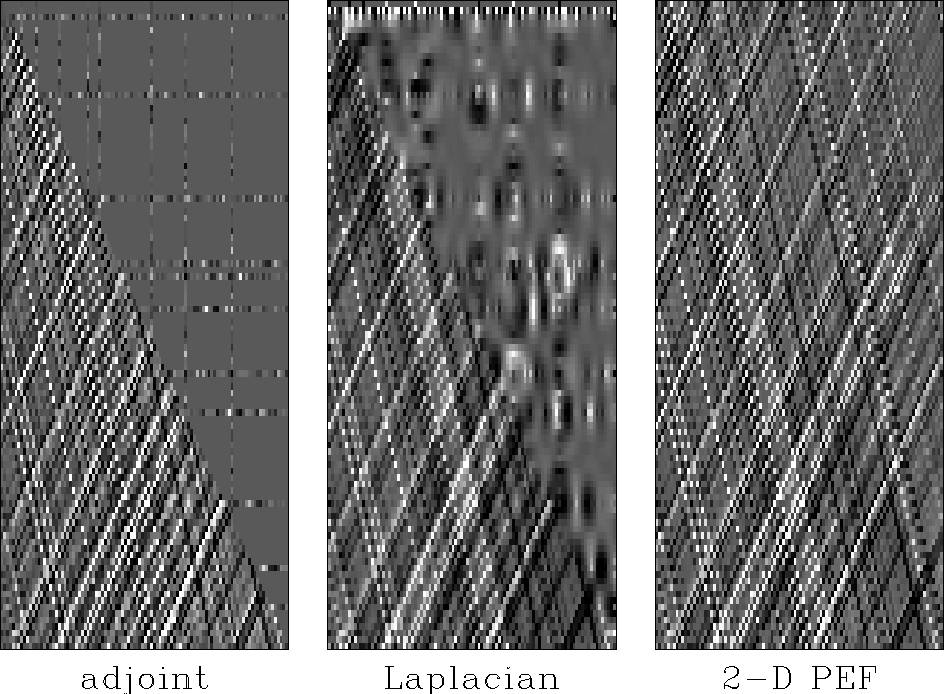From the data south of ![]() latitude
in Figure 5,
we see the orientation of the two striations
(along with the third striation of along-the-track noise).
But there are two orientations in the topography,
not just one, so the problem is not so simple
that we can merely find a skewing and stretching of coordinates
that would make the image appear isotropic.
The approach I advocate is to seek a partial differential equation
that the image will be a solution of.
In reality, a complicated image will satisfy no simple differential equation,
so instead I seek a filter with minimum power out.
I first find this filter in the region of good spatial coverage.
Then I carry it north to the area of sparse coverage
where I find the solution by the principle of minimum power out.
The result is shown on the right in Figure 6.
The result is overwhelmingly better than the isotropic approach.
The result is almost perfect but the solutions
might still be a little weaker in the middle of large track gaps
because I limited the number of conjugate-direction iterations to 20.
(The figure computes in a few seconds.)
latitude
in Figure 5,
we see the orientation of the two striations
(along with the third striation of along-the-track noise).
But there are two orientations in the topography,
not just one, so the problem is not so simple
that we can merely find a skewing and stretching of coordinates
that would make the image appear isotropic.
The approach I advocate is to seek a partial differential equation
that the image will be a solution of.
In reality, a complicated image will satisfy no simple differential equation,
so instead I seek a filter with minimum power out.
I first find this filter in the region of good spatial coverage.
Then I carry it north to the area of sparse coverage
where I find the solution by the principle of minimum power out.
The result is shown on the right in Figure 6.
The result is overwhelmingly better than the isotropic approach.
The result is almost perfect but the solutions
might still be a little weaker in the middle of large track gaps
because I limited the number of conjugate-direction iterations to 20.
(The figure computes in a few seconds.)
 |
You might notice that the two striations in the topography have different textures, one being string like and the other being rod-like. This means that the underlying ``waves'' making up the striations have a different spectrum. The method used here works equally well (or badly) if the two spectra are the same. The fundamental assumption is one of superposition, an assumption whose validity will be limited according to the geological mechanism that built the topography.